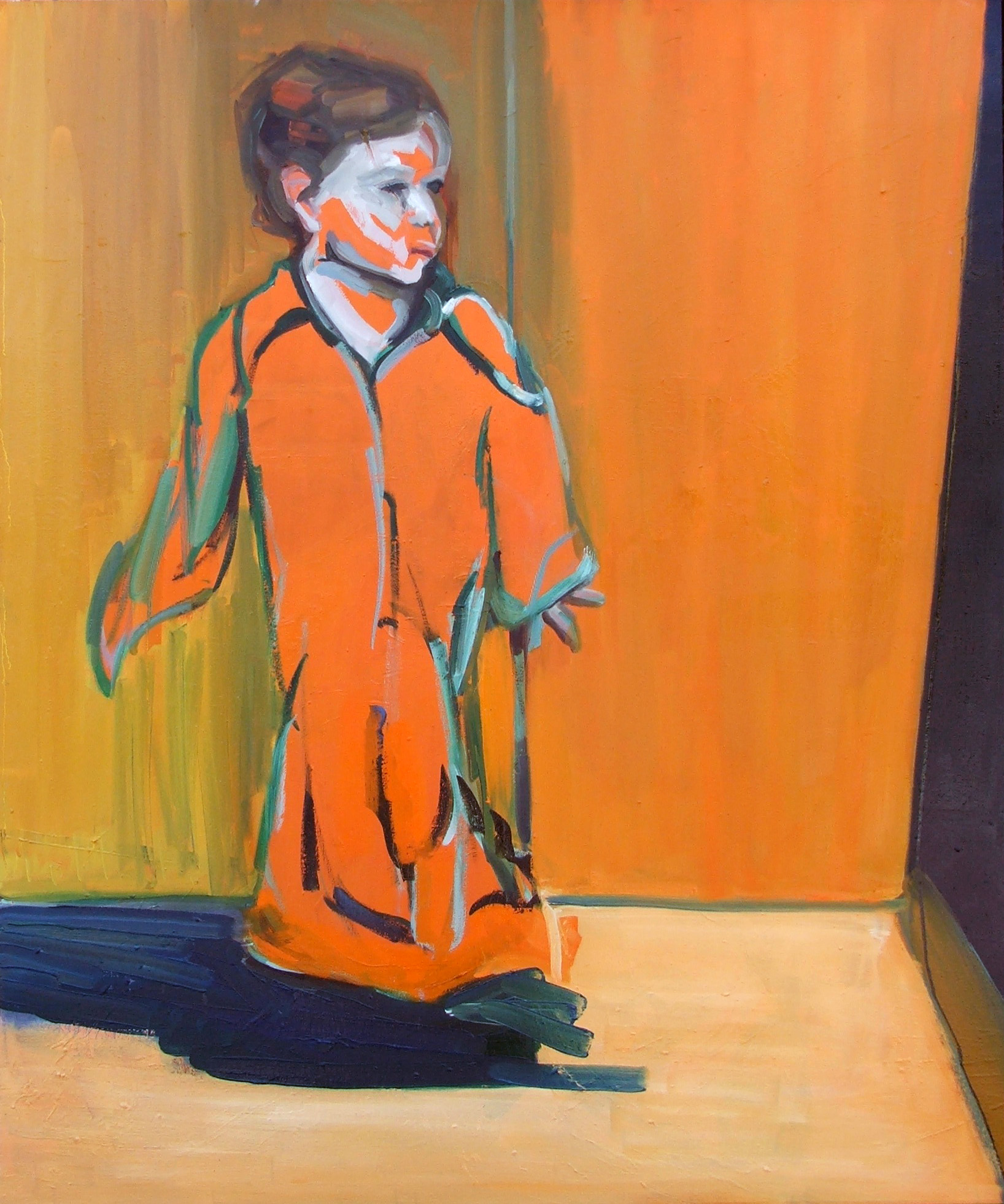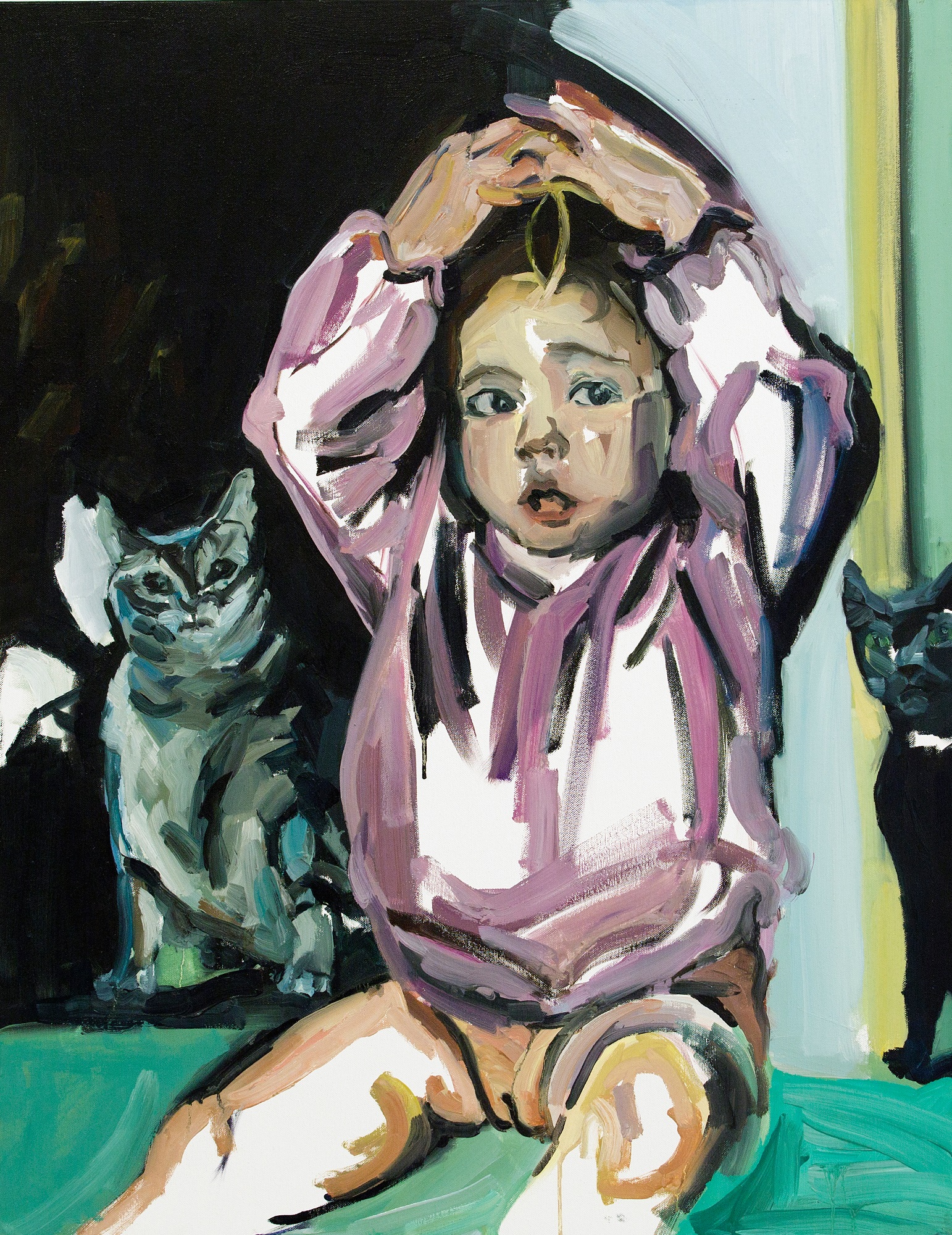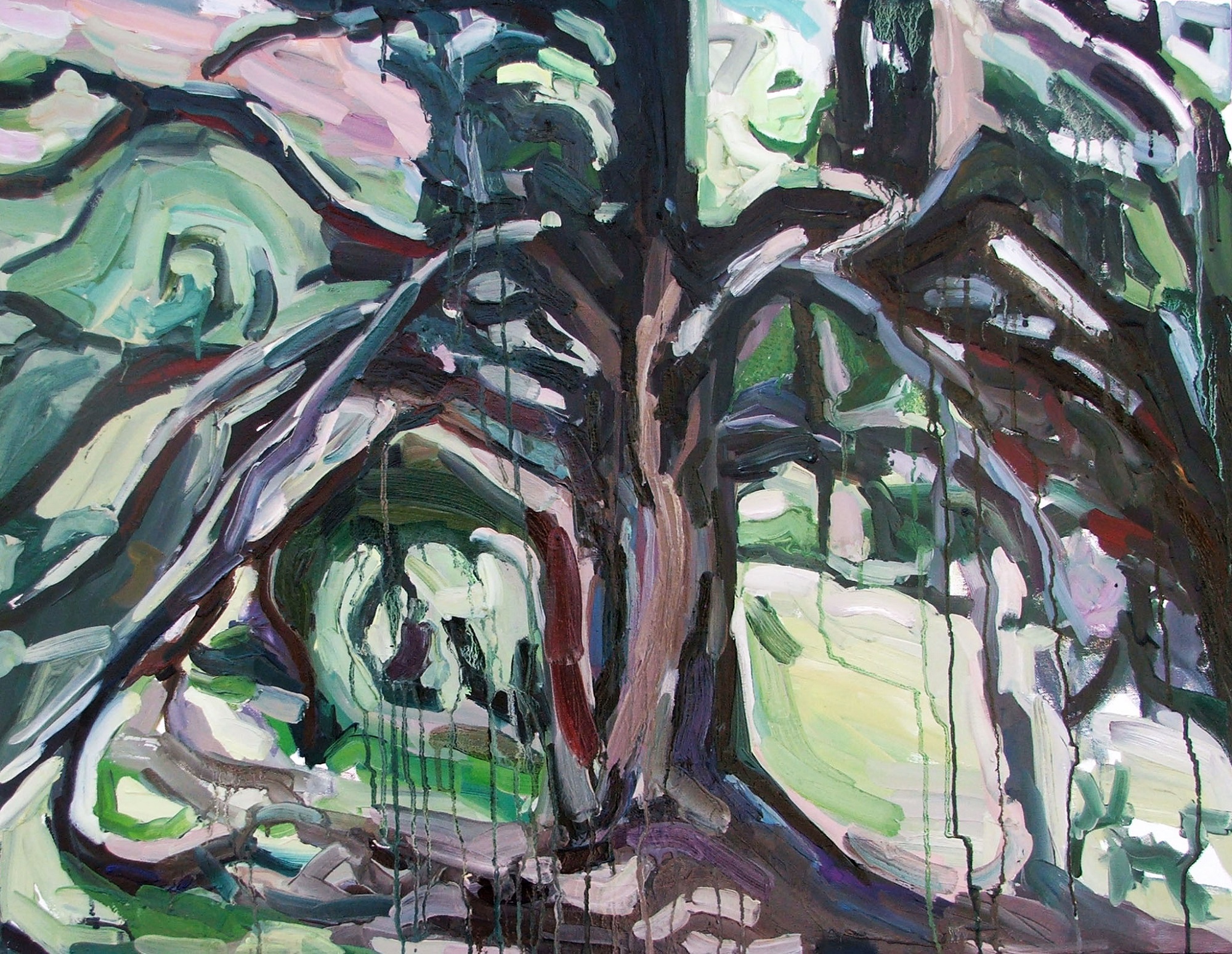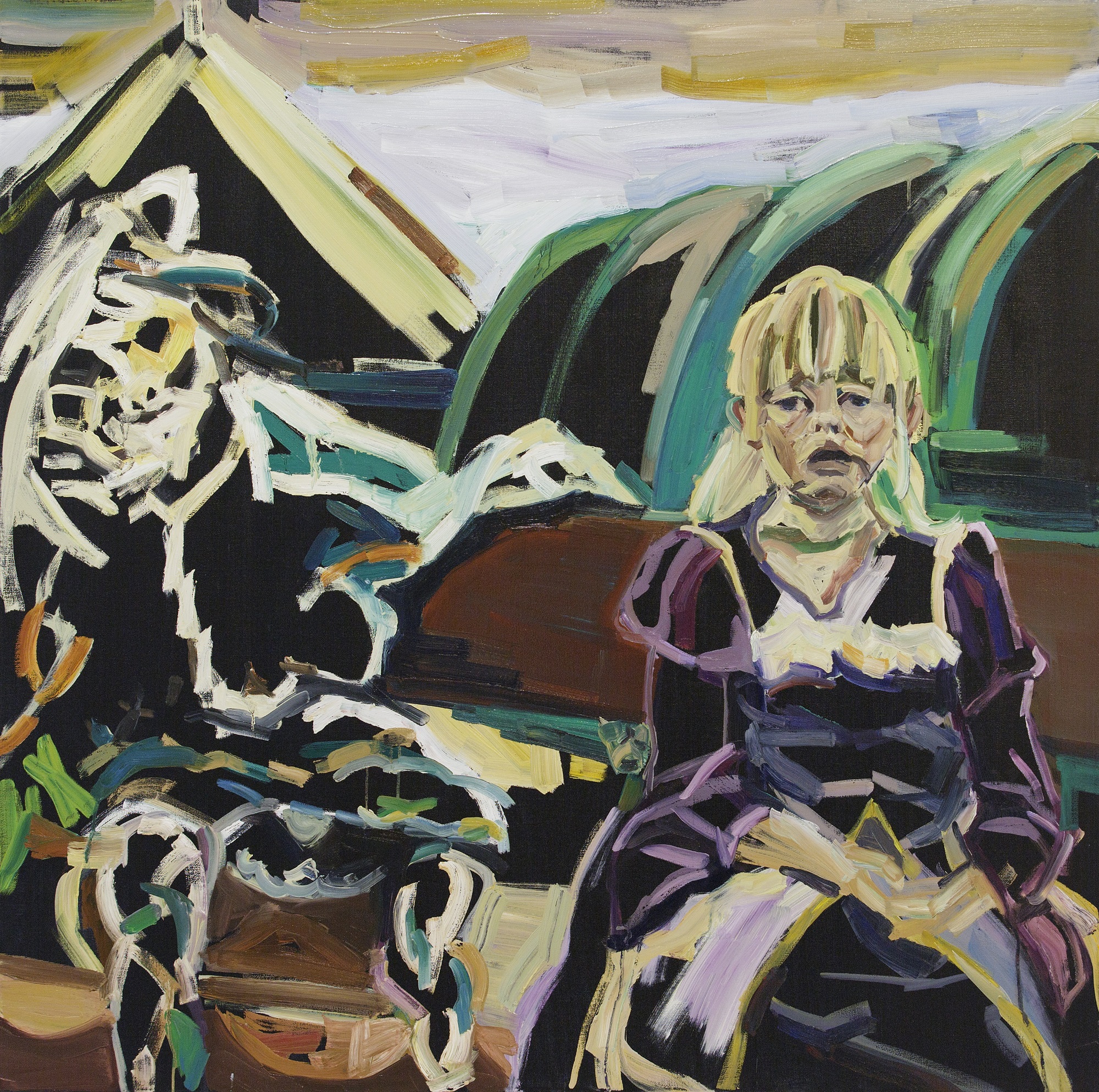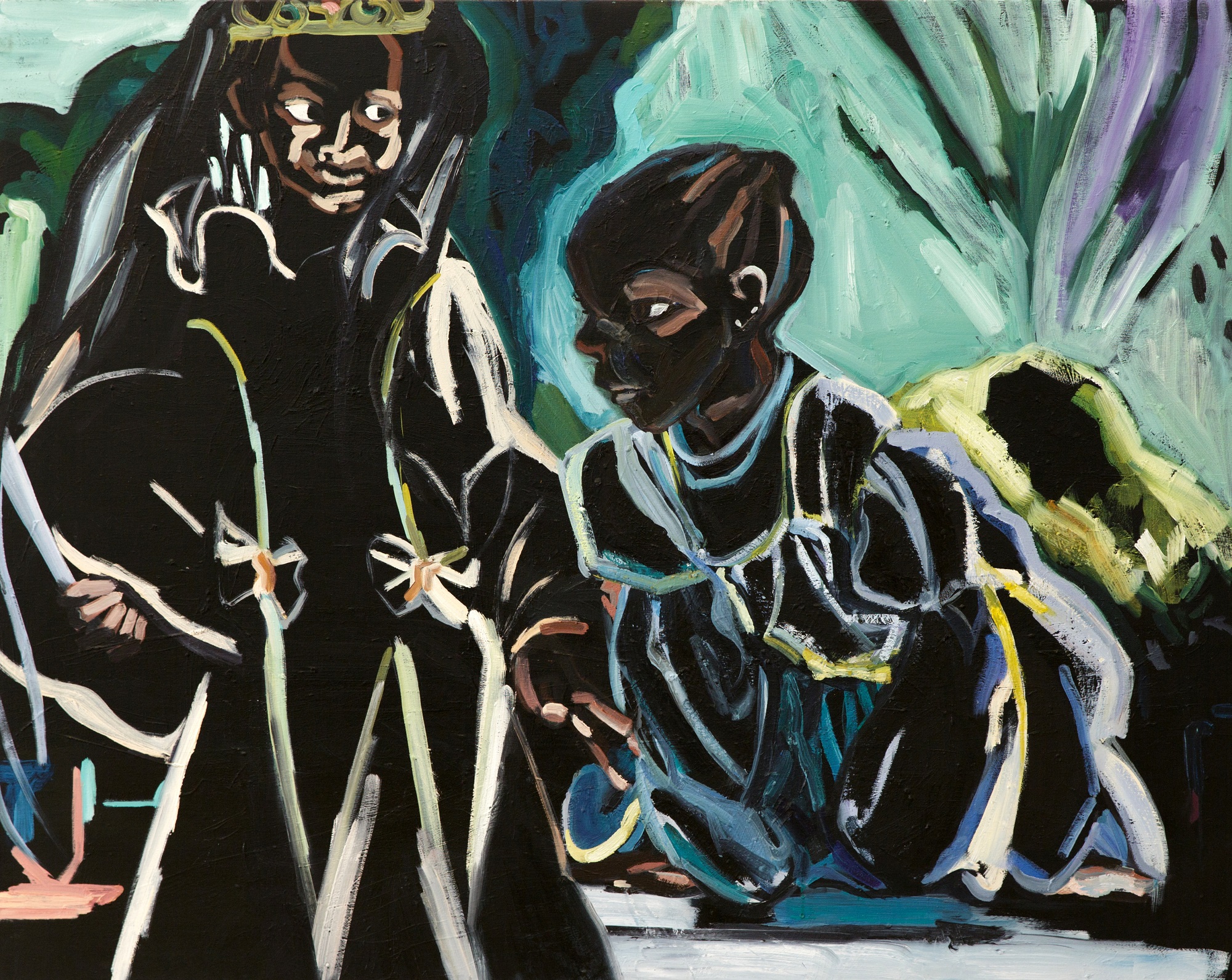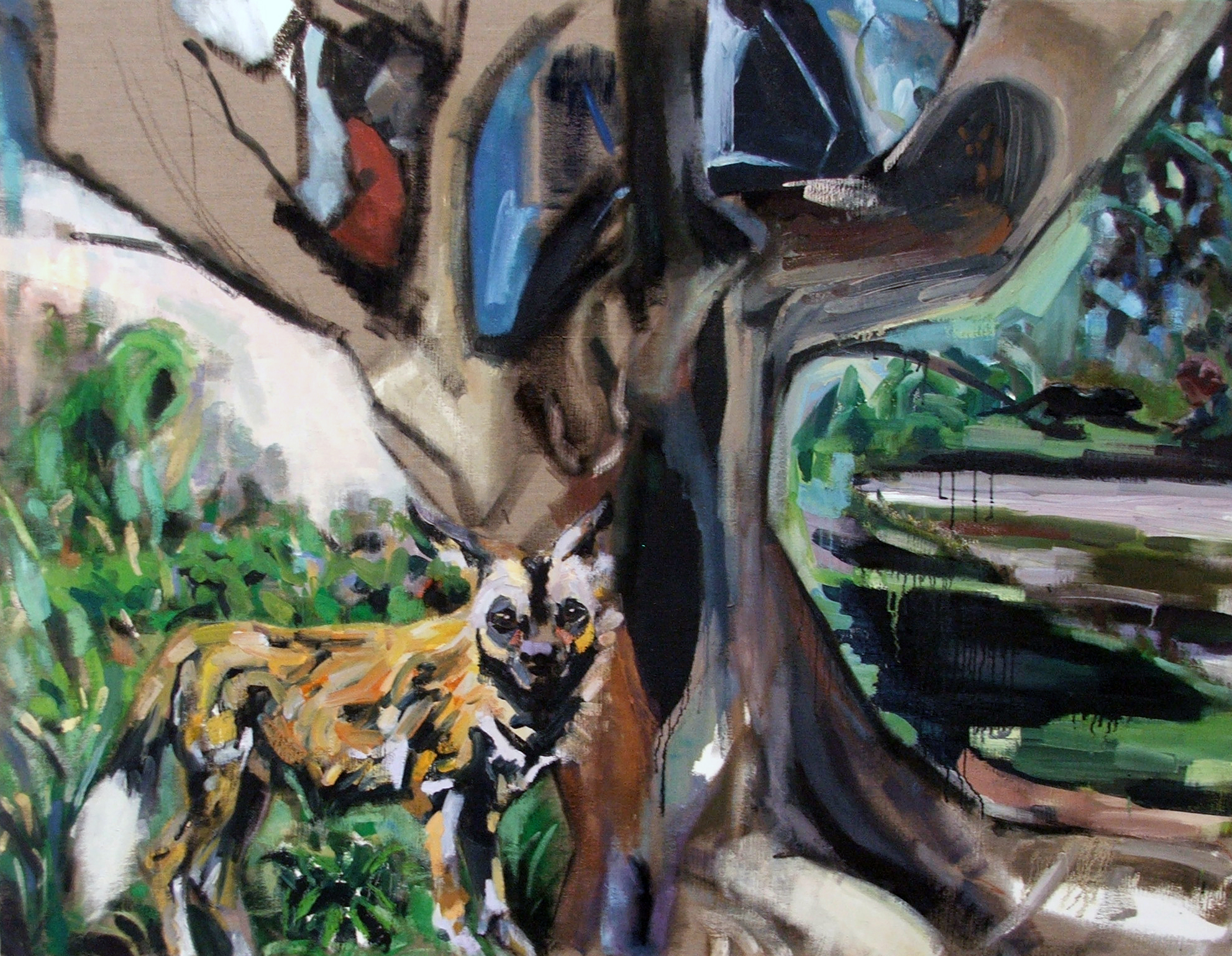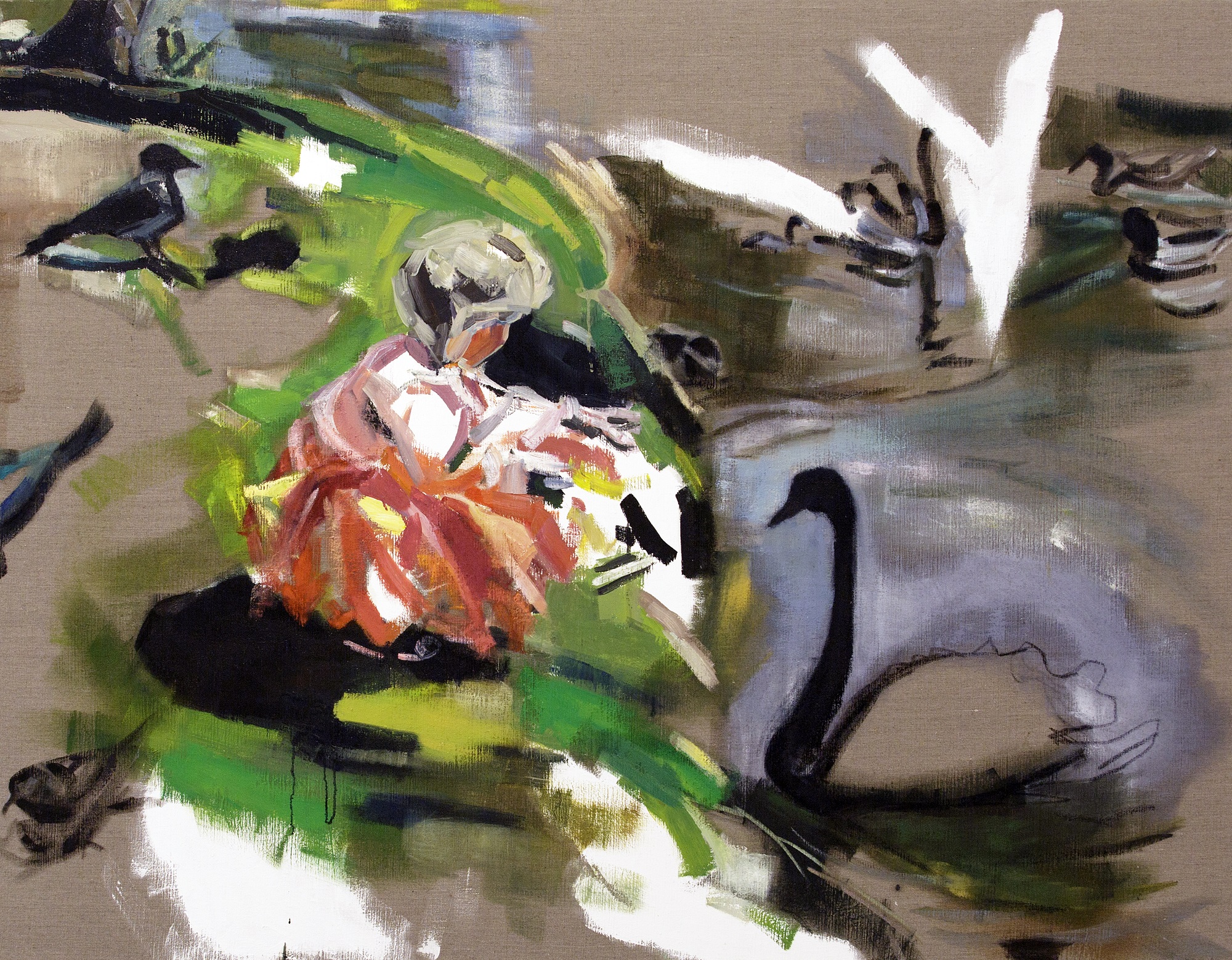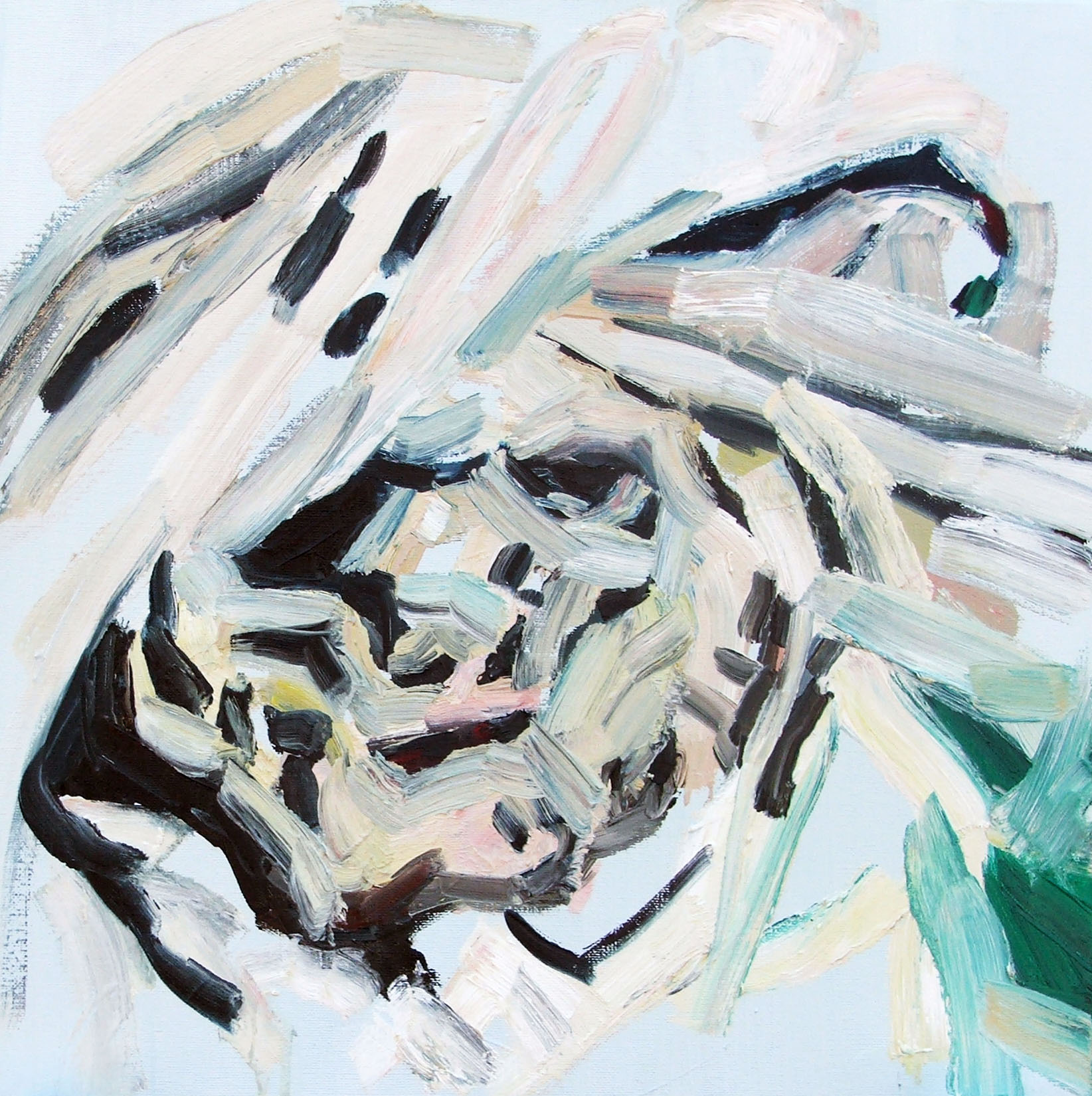Talya Raz
Talya was born in 1975 in Israel, lives and works in Tel Aviv. Talya is a member of the Alfred gallery since 2012.
Talya studied Fine Art at the Free Academy for Fine Arts (De Vrije Academie voor Beeldende Kunst), The Hauge, Holland, a B.A in Fine Art and Psychology at the Haifa University as well as an MFA program at the Haifa University.
Talya paint self-portraits through other people – her projections. She portrays human figures in ordinary situations where nothing really happens. She observes them while they are in a state of contemplation, rather than in action. These moments of basic being evoke a burst of raw emotion, which she tries to maintain in the finished work.
Many of her characters wear a costume, or an outfit atypical of their everyday life. In most of her works, everyday life appears under the surface. There is a constant gap between the outfit and the character’s “regular” self. The filter used by her characters protects them from the outside world, and their melancholy is intensified by the outfits’ vibrancy.
She seeks out images with bright, rich and opposing colors. Similar to the human situations she depicts, the colors touch but do not mix. The technicality of preparing the colors is freeing, and allows her to work with many shades of colors, while maintaining their easily recognizable distinction – where one shade ends and the next begins.
She deconstructs the figures into patches of color. Even the drawing lines serve as patches on the canvas. The figure is deconstructed to its most basic form, while preserving the actual figure. At some point in the creative process, the image itself loses significance; it ceases to be the work's subject, and becomes a representation, similar to an emotional map.
The characters interact with the background; they are supported by its color and are integrated into it simultaneously. She challenges herself by leaving parts of the painting untreated. On these parts, she consciously chooses to show the figures disintegrate and disappear into the colored background, as that background infiltrates them. The untreated parts allow the constant fluctuation between the inner world and the one outside.
One of the challenges in her work at present is finding the specific point at which to add the exact quantity of paints and color patches in order to convey her characters’ emotional baggage. She attempts to minimize brush strokes, and to portray the characters’ disposition in a complete, intense and direct manner.
